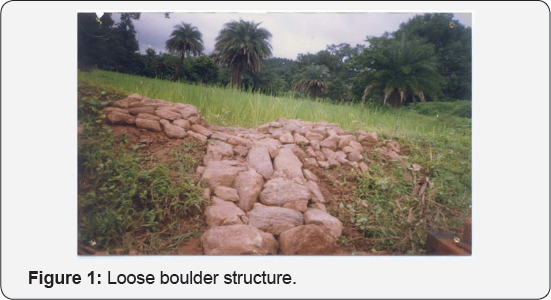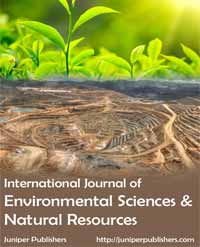Soil and Water Conservation Measures in Megraded Watershed of Kandhamal District, Odisha-Juniper Publishers
Juniper Publishers- Open Access Journal of
Environmental Sciences & Natural Resources
Soil and Water Conservation Measures in Megraded Watershed of Kandhamal District, Odisha
Authored by Rageswari Subudhi
Abstract
A trial was conducted on farmer’s field at Sudreju watershed of Kandhamal district of Orissa, India located within 20030'16” to 20031'24''N latitude and 84017'8” to 84018'14” E longitude with an altitude of 75m above mean sea level. The trial was conducted during 2001-02 & 2002-03.Kharif paddy (cv. Lalat) was transplanted. The project was conducted under National Agricultural Technology Project (Rainfed Rice Production System-7) at All India Coordinated Research Project for Dryland Agriculture (OUAT), Phulbani, Orissa with following objectives. To check erosion of upstream field. To store water in the field to a desired depth. To increase the rice yield. The following treatments were tried Ta- Brushwood structureT2- Loose boulder structureT3- No structure There were seven replications and design was R.B.D. Date of transplanting: August Date of harvesting: Last week of October to First week of NovemberDuring 2001, there was no effective drought spell, but during (2002), drought spell occurred during 6th -14th, 18th -27th July, 14th -21st September, 28th September to 13th October and 20th October onwards. There was no serious incidence of pest and disease. Soil was acidic (pH-5.42). Organic Carbon-4.35 g/kg. Also loose boulder structures conserve more moisture compared to no structure. So loose boulder structures should be recommended in degraded watersheds of Kandhamal district of Orissa to conserve soil and moisture and to increase the yield of rice.
Results and Discussion

The rainfall was 1949.7mm during (2001) and 887.9mm during (2002). The grain yield of rice was shown in (Table 1)in different treatments. It is observed that the grain yield was significantly higher in loose boulder structures (T2) (Figure 1), compared to other treatments. The average cost was also low in loose boulder structure i.e., Rs. 80.00 per structure. In (Table 2), soil loss was shown which shows that loose boulder structures conserve more soil (0.055 tonne/structure) as compared to others. Also the area lost due to siltation in the down stream field was sh2 area was lost in control and less area (0.12 m2) was lost due to loose boulder structure. Also structures conserve more moisture compared to no structure (Table 3). So loose boulder structures should be recommended in degraded watersheds of Kandhamal district of Orissa to conserve soil and moisture and to increase the yield of rice.



For more Open Access Journals in Juniper Publishers please click on: https://juniperpublishers.business.site/
For more articles in Open Access Journal of Environmental Sciences & Natural Resources please click on: https://juniperpublishers.com/ijesnr/
To know more about Open Access Journals Publishers
To read more…Fulltext please click on: https://juniperpublishers.com/ijesnr/IJESNR.MS.ID.555593.php




Comments
Post a Comment